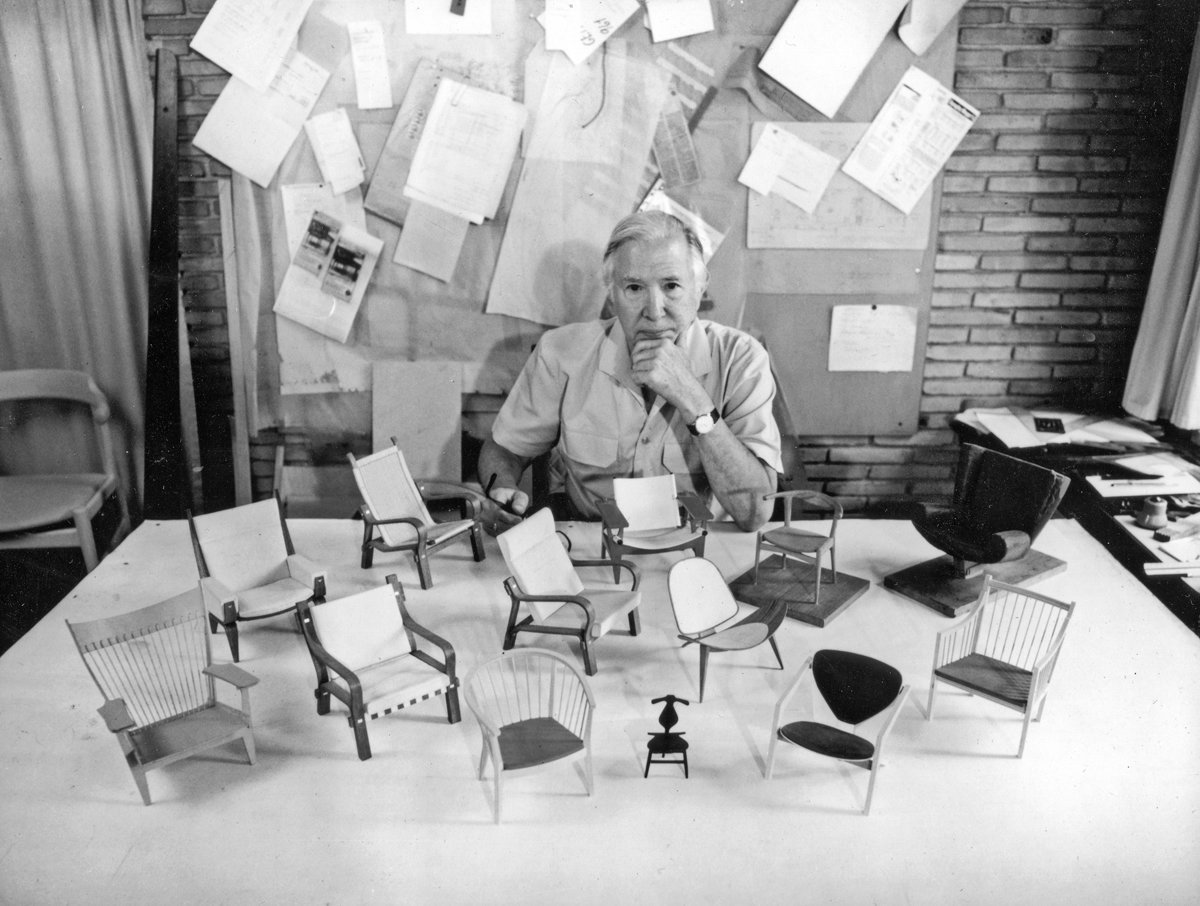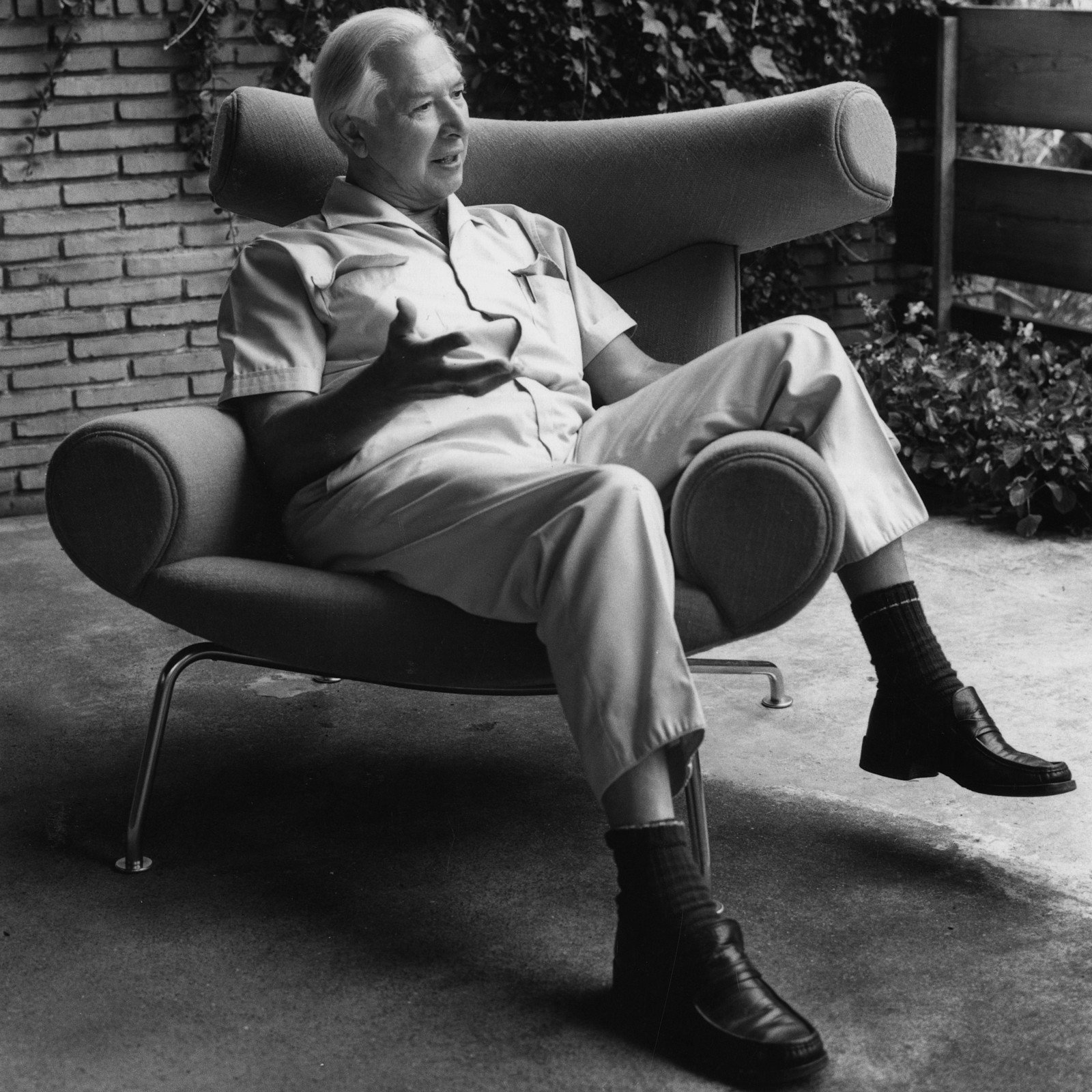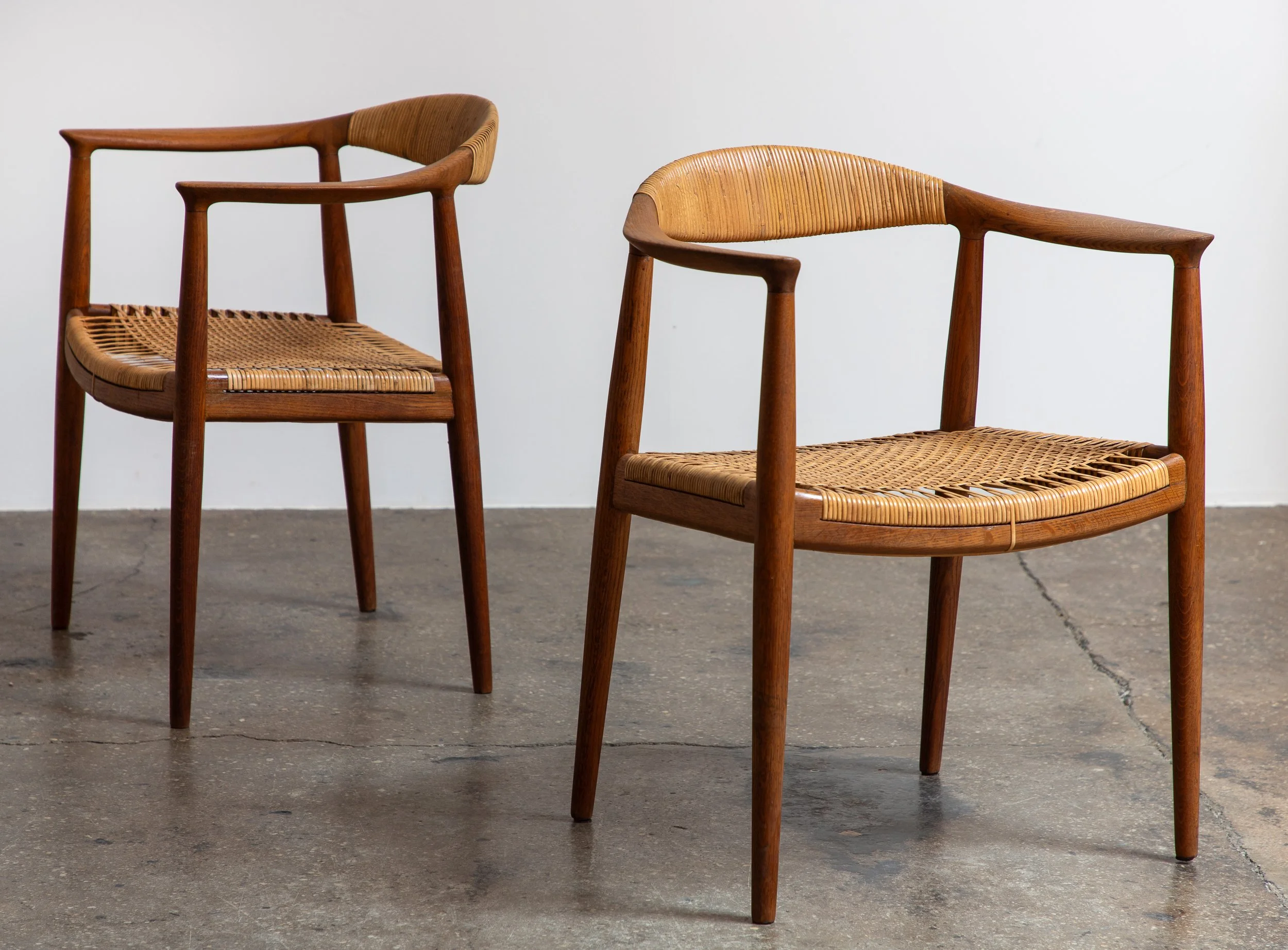
Hans Wegner
A chair is only finished when someone sits in it.
Hans J. Wegner was a renowned Danish furniture designer celebrated for his iconic, timeless creations that blend functionality with aesthetic simplicity. Known for his masterful craftsmanship and innovation, his designs, such as the Wishbone Chair, epitomize Scandinavian modernism. Wegner's work remains a cornerstone in mid-century furniture design, appealing to enthusiasts and collectors worldwide. Explore the legacy of Hans Wegner to discover pieces that embody elegance, durability, and enduring design.
Browse our Hans Wegner Collection
Hand Wegner is credited with being the driving force behind Danish Modern furniture
Wegner's two most notable works, the Round Chair and the Wishbone chair, both came in 1949. That year, Wegner presented three chairs for the annual exhibition of the Copenhagen Cabinetmakers' Guild while employed by Johannes Hansen: a three-part (tripartite) plywood shell chair, the Folding Chair, and the Round Chair.[31][32] The Danish press that attended the event initially paid attention to the tripartite chair.[33] While the tripartite chair had captured the attention of the Danish press, American journalists attended the event for the first time and were drawn to the Round Chair.[34] The American journalists shared the news of this chair back home and it became was the subject of much attention internationally. The American magazine Interiors featured the chair in their piece on the event and christened it “most beautiful chair in the world.”[35][36][37] This was the first coverage of Danish Modern in the American press.
Round Chair (1950) by Hans J. Wegner
Hans J. Wegner received his training (1936–1938) as a cabinetmaker at the Copenhagen School of Arts and Crafts. He belonged to a generation of designers including Arne Jacobsen, Børge Mogensen, Finn Juhl and Poul Kjaerholm that brought worldwide recognition to Scandinavian design in the postwar era. Over the course of his career, Wegner created more than 1000 designs, of which around 150 are still manufactured today. As the most productive furniture-maker of his generation, he played a major role in shaping the style that has come to be known and cherished as »Scandinavian furniture design«.
With his mastery of woodworking techniques, the trained cabinetmaker integrated his knowledge as a craftsman directly into his designs. His works are characterized by their careful handling of the material wood and an enthusiasm for even the smallest details. He responded to the resource shortage of the postwar era with highly material-efficient designs, in strict adherence to the principle of "no more than absolutely necessary". Wegner did not strive for pure asceticism or extreme austerity, but freely incorporated expressive shapes as a proponent of Organic Modernism. He took inspiration from classics of modern furniture design or historical furniture types from foreign cultures and reinterpreted them in his own signature style.
Detail of Round Chair (1950) by Hans J. Wegner
CH24 Wishbone Chair by Hans J. Wegner

“The good chair is a task one is never completely done with.”
— Hans Wegner








